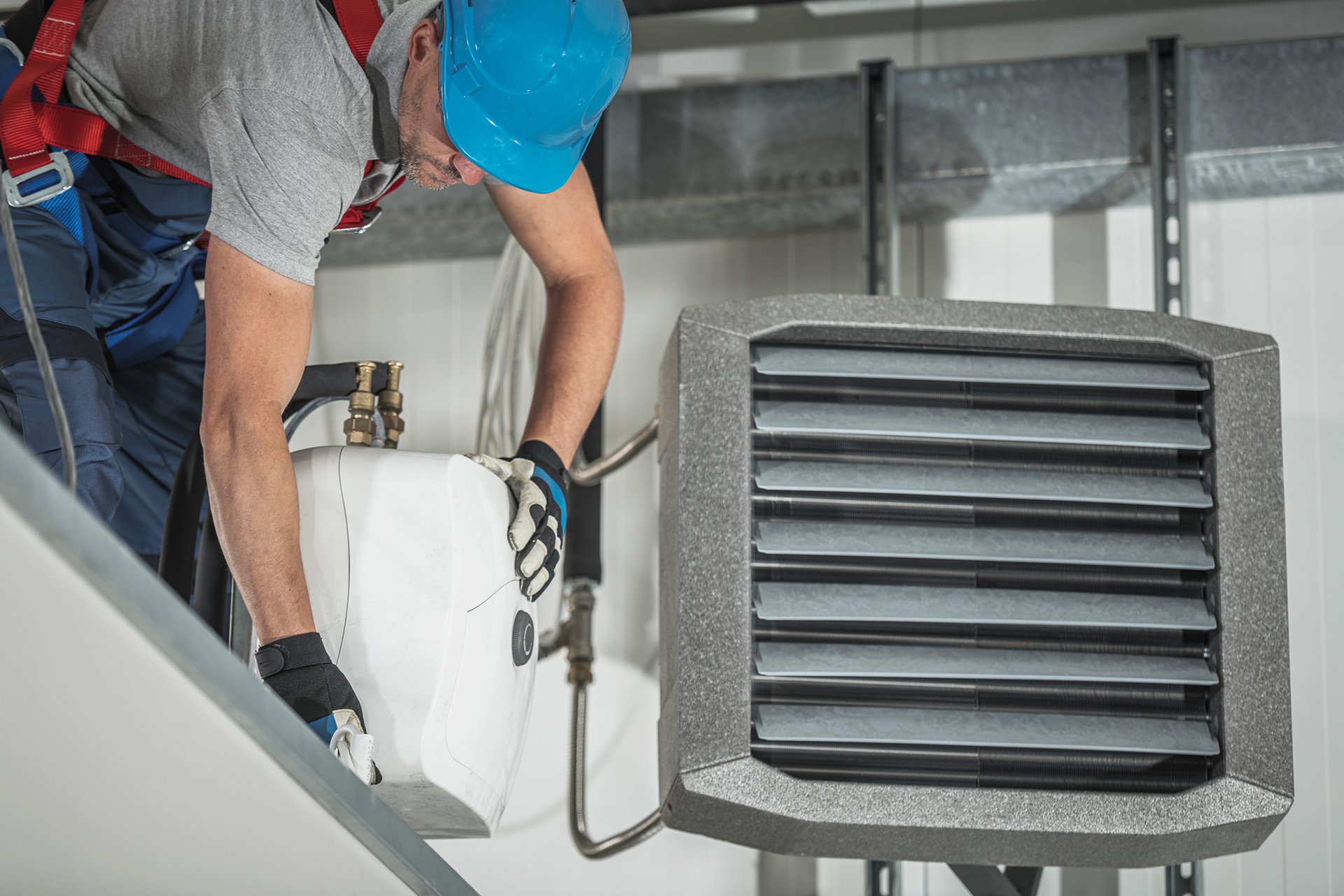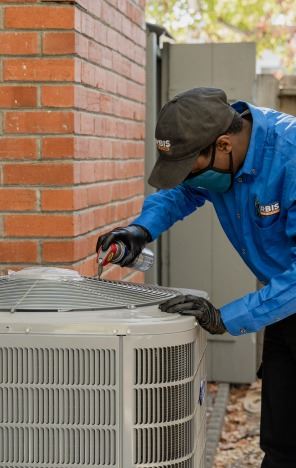Top Strategies for Maximizing Comfort with ductless mini splits
Top Strategies for Maximizing Comfort with ductless mini splits
Blog Article
How a Heatpump and Heater Interact to Enhance Your Home's Heating Efficiency
Recognizing exactly how a heatpump and heater interact is necessary for house owners seeking effective heating remedies. Each system has its staminas, providing a balanced technique to home comfort. The heatpump masters modest temperatures, while the heating system provides fast warmth during extreme cold. This synergy not only reduces energy prices but additionally improves the lifespan of both appliances. What variables influence this collaboration, and exactly how can house owners maximize their benefits?
Comprehending Heat Pumps: Exactly How They Work
Although many individuals might be not familiar with their internal workings, heatpump play a crucial duty in contemporary heater. These gadgets run by transferring warm from one location to one more, making use of the concepts of thermodynamics. In colder months, a heat pump essences warmth from the outdoors air, ground, or water, and transfers it indoors to heat the living space. On the other hand, throughout warmer months, it can turn around the process, functioning as an ac unit by removing warm from inside to the outside.Heat pumps consist of an evaporator, compressor, expansion, and condenser valve. The refrigerant within the system takes in warm as it evaporates at reduced temperature levels and pressures. The compressor after that raises the pressure and temperature level of the refrigerant, allowing it to launch warm as it condenses. This effective process can greatly minimize power usage compared to typical home heating techniques, making heat pumps a sustainable selection for climate control in homes.
The Role of Furnaces in Home Heating
Heaters play an essential role in home heating by supplying a reliable source of warmth during the cooler months. They run by generating heat through combustion or electric resistance, distributing it throughout the home through air ducts or glowing systems. The effectiveness of a heating system is typically gauged by its Annual Fuel Utilization Effectiveness (AFUE) score, which suggests how effectively the unit converts gas into heat.Furnaces can use various power resources, consisting of gas, electrical energy, oil, or gas, permitting home owners to pick one of the most appropriate alternative for their demands. Unlike heatpump, which might have a hard time in severe cool, heating systems maintain constant performance, making certain that indoor temperature levels stay comfortable despite outside problems. Additionally, contemporary furnaces often come furnished with advanced modern technology, such as wise thermostats and variable-speed blowers, boosting their efficiency and responsiveness. This convenience makes heating systems a crucial element in comprehensive home heating methods.

Advantages of Utilizing Both Systems Together
Integrating the staminas of both furnaces and heat pumps can bring about an extra efficient and efficient home heating option. Utilizing both systems allows home owners to capitalize on the heat pump's energy performance during milder temperature levels while depending on the furnace for even more severe cold conditions. This twin strategy can greatly minimize energy prices, as heatpump consume less electrical power than traditional home heating methods when temperatures are moderate.Additionally, making use of both systems with each other can enhance convenience degrees in the home. Warm pumps can supply constant, also home heating, while heaters can quickly elevate ambient temperatures when needed. Additionally, the assimilation of both systems can prolong the life expectancy of tools by decreasing damage on each device, as they share the work. Eventually, property owners can appreciate a balanced, cost-efficient heating solution that changes flawlessly to varying climate condition, ensuring a warm and inviting home throughout the winter season.
How Warmth Pumps and Furnaces Complement Each Other
When home owners integrate heatpump and furnaces, they produce a corresponding heater that makes best use of performance and convenience. Heatpump run by transferring warm from the outside air or ground, making them highly effective in moderate climates. They succeed throughout milder temperature levels, offering cost-effective home heating. On the other hand, furnaces produce heat through combustion or electric resistance, supplying solid, instant heat during extreme cool conditions.The mix of these 2 systems enables vibrant modifications based upon temperature level variations. During warmer months or milder winter season days, the heatpump can take the lead, conserving energy and lowering prices. As temperature levels decrease, the heater can effortlessly involve, guaranteeing consistent heat throughout the home. This synergy not only optimizes power use yet also enhances the life expectancy of both systems, as each system operates within its excellent efficiency range. Together, they develop a well balanced atmosphere that adjusts to differing environment needs.
Maximizing Effectiveness: Tips for Homeowners
Homeowners can enhance their heating effectiveness through a number of sensible approaches. Developing a regular maintenance routine, incorporating clever thermostat modern technology, and applying efficient insulation and securing services are essential actions. These procedures not only boost comfort however also lower power costs.
Normal Maintenance Schedule
To assure maximum heating effectiveness, establishing a regular maintenance timetable is necessary for any kind of home. Homeowners need to prioritize routine inspections of both warm pumps and furnaces to identify peak efficiency. This consists of transforming air filters each to 3 months, as stopped up filters can substantially reduce effectiveness. In addition, scheduling specialist upkeep at the very least yearly enables professionals to determine and attend to possible issues before they rise. Property owners ought to also clean the heatpump's outdoor device to avoid particles build-up that can prevent airflow. By sticking to a normal upkeep timetable, house owners not just improve their heating unit' effectiveness but likewise expand their lifespan, leading to greater convenience and minimized power expenses throughout the chillier months.
Smart Thermostat Assimilation
Incorporating a clever thermostat into a home heating unit can considerably enhance power performance, particularly as it permits accurate control over temperature level setups. These devices can find out the house owner's routine and choices, immediately readjusting the temperature level to maximize comfort while lessening energy use. They can lower home heating throughout times when the home is empty, decreasing unneeded usage. Numerous smart thermostats likewise provide real-time energy usage information, making it possible for property owners to make informed decisions regarding their review heating behaviors. Additionally, remote gain access to by means of smart device applications allows users to change setups from anywhere, guaranteeing the home is warm upon return. Overall, smart thermostat assimilation not just enhances comfort yet considerably adds to energy cost savings and performance.
Insulation and Securing Solutions
Smart thermostats play a crucial role in energy efficiency, however their performance can be substantially boosted by correct insulation and sealing solutions. House owners ought to focus on protecting attic rooms, wall surfaces, and floors to decrease warmth loss. Premium insulation materials, such as spray foam or fiberglass, can substantially enhance thermal resistance. Furthermore, securing voids around windows, air ducts, and doors prevents cool air seepage and warmth retreat. Weatherstripping and caulking are reliable methods for resolving these leaks - heat pump service. Regular examinations for air leakages, in addition to the usage of blower door tests, can assist determine trouble locations. By purchasing insulation and securing, house owners can maximize the performance of their heating unit, eventually resulting in lowered energy consumption and lower energy bills
Usual Myths About Warm Pumps and Furnaces
What mistaken beliefs surround warm pumps and heaters? Numerous people wrongly think that heat pumps are ineffective in cooler climates. Actually, contemporary heatpump are developed to operate successfully even in low temperature levels, giving dependable heating throughout winter season. Another common myth is that heaters are always much more efficient than heatpump. However, this depends upon the particular energy resources and efficiency rankings of the systems in question. Some might likewise assume that using both systems all at once is unneeded, yet actually, this mix can maximize home heating effectiveness, especially throughout extreme climate condition. Additionally, people usually think that heatpump require continuous upkeep, when truthfully, they have comparable maintenance requires to traditional furnace. By disproving these misconceptions, homeowners can make even more informed decisions regarding their heating options, inevitably causing improved comfort and energy effectiveness in their homes.
Upkeep Considerations for Combined Equipments

Often Asked Inquiries
Can Warm Pumps Job Effectively in Incredibly Cold Climates?
Heatpump can struggle in incredibly cool climates due to decreased effectiveness and warmth removal limitations. Advancements in modern technology have actually led to designs made for much better performance in such problems, improving their stability in harsh environments.
How Much Time Do Warmth Pumps and Furnaces Generally Last?
Warm pumps normally last 15 to two decades, while heaters have a lifespan of 15 to three decades. Normal upkeep can expand their longevity, making certain reliable procedure and lowering the need for premature substitutes.

What Is the Ordinary Expense of Putting Up Both Systems?
The ordinary cost of mounting both a warm pump and a heater typically ranges between $5,000 to $10,000 - ductless mini splits. Factors affecting this price consist of system size, installment intricacy, and regional labor index prices
Are There Tax Obligation Incentives for Using Energy-Efficient Heating Equipments?
Several homeowners ask about tax rewards for energy-efficient heating systems. Numerous federal and state programs often use refunds or credit histories, motivating the adoption of lasting technologies to minimize energy intake and promote environmental duty.
How Do I Choose the Right Dimension Heat Pump and Furnace?
Choosing the appropriate size heatpump and heating system includes calculating the home's square video, considering insulation high quality, and examining my blog local climate. Consulting an expert can assure ideal system performance and power performance based upon certain demands. furnace replacement. Comprehending how a heat pump and furnace work with each other is necessary for homeowners seeking effective heating options. In colder months, a warm pump essences warmth from the outside air, ground, or water, and transfers it indoors to warm the living space. When home owners integrate heat pumps and heating systems, they create a complementary heating system that maximizes efficiency and convenience. Heat pumps run by moving heat from the outside air or ground, making them extremely effective in moderate environments. Heat pumps can struggle in exceptionally cool climates due to minimized effectiveness and heat extraction constraints
Report this page